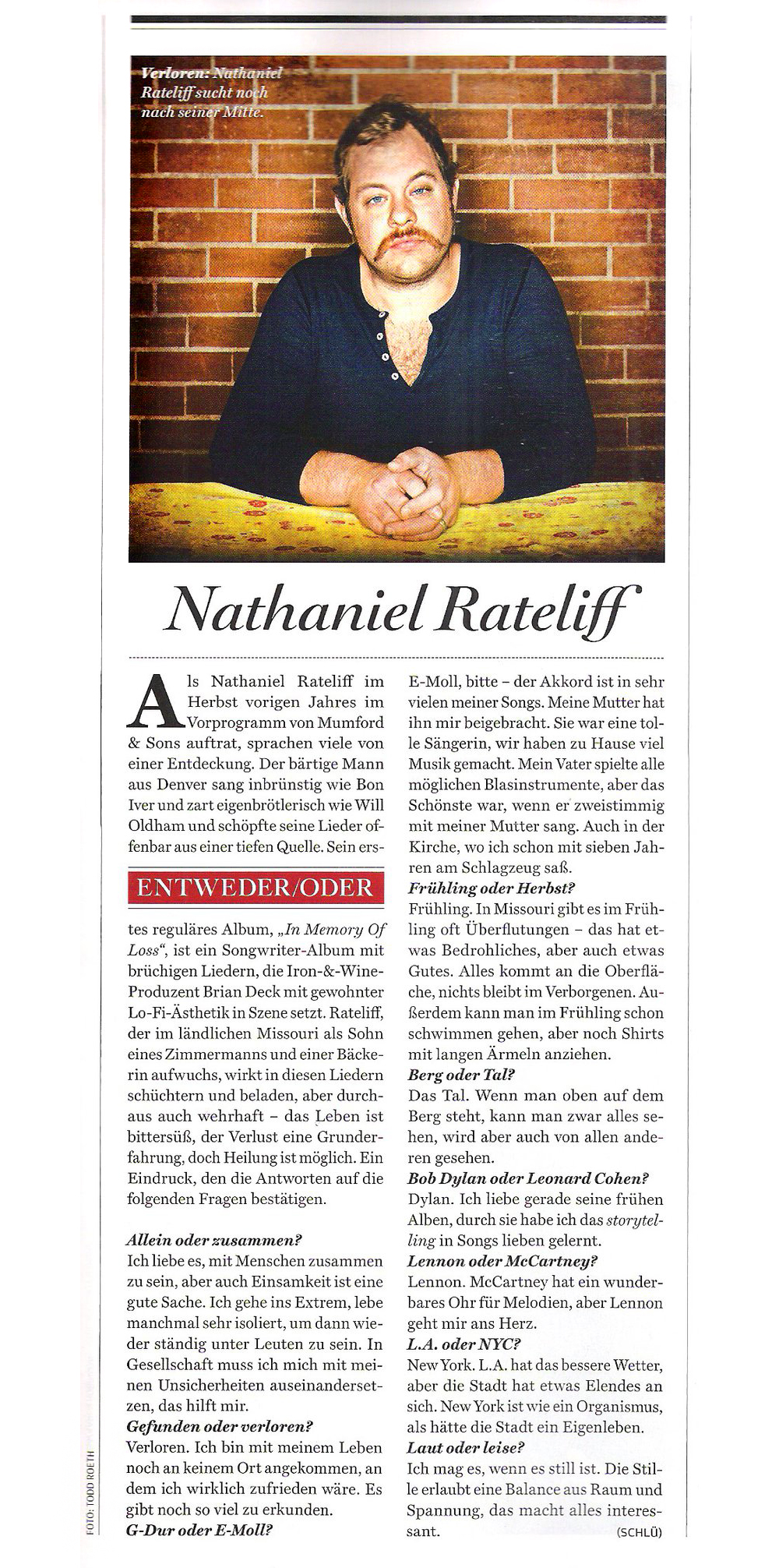I don’t speak German, but I was excited to see Nathaniel Rateliff featured in Rolling Stone Germany, and his interview ran in print with a portrait I took of him. He is a great song-smith and musician who deserves to be heard.
I am privileged to meet many musicians in their early days, and I am privy to some of their growth as they navigate through their musical careers. The music aside, there is a whole other art to the business and brand building of a musician and their product – their songs and their performances. Which leads me to the second noteworthy idea I want to chronicle: I am captivated by the differences (and similarities) to the reaction of American musicians here in the States versus their reception and perception overseas. I have photographed European musicians too, whose images have been used in both American and foreign markets, and in either direction, the translation is interesting to me. There are few art forms that resonance more throughly through culture than music. The physical sense of sound is de-facto, but to me as a photographer, so is sight (sometimes smell too). With music, the aesthetics of emotion, language, political and topical issues, even fashion and lifestyles (or the appearance of lifestyles) also are part of die gestalt that makes up an artist’s essence, or in commercial speak – their brand.
I don’t speak German, but I do speak photography. An image cannot be translated in the literal sense, and neither can music. Both forms of communication rely on the cultural currents and aesthetics within given political and geographic boundaries for their creation and their consumption. The same impulses that drive the creation of art also need to be present to rightly understand it; there needs to be context. Someone once said “Art is not truth. Truth conforms to reality. Art invents reality.” Reality, I have learned, is a relative term between people and certainly between cultures. I do not believe that my photography is art, at least in the same sense as is the music made by the musicians I photograph. But the images I make are a (my) reflection of the artist and the music they make. To see what images are used and how they are played in other markets (cultures) is a statement on the aesthetics of that market and a valuable lesson for me to study.
While this interview is not of great substance (Does he like spring or autumn better?), how musicians are portrayed in written word also informs me of the values and desires of a given audience (i.e. culture, market). Often we project our aspirations onto musicians, we craft an idealized story of and for them – one that we cannot achieve for ourselves. We focus on the parts of their story that fulfills our romantic notions or that will remedy the shortcomings of our own reality. I am conscious and sometimes guilty of this when I make a portrait. In word or image, these depictions cultivate the brand for many musicians, and can be a strong auto-biographical testament to the culture that music operates in.
